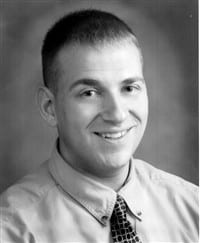When the Brain Gets Stuck Obsessive Compulsive Disorder Is Common, Often Debilitating — and Treatable
It’s OK to be very organized. Fussy, even.
“There’s nothing wrong with wanting to have things in a neat way, but if you’re spending hours organizing or reorganizing things and it’s keeping you from functioning normally in life, that’s a problem,” said Dr. Kenneth Jaffe, a psychiatrist at Holyoke Medical Center. “A lot of people, by the nature of their jobs, have to be organized and neat, but it becomes an illness when the symptoms begin to substantially interfere with the functioning of their jobs.”
The same goes for wanting to be clean. Normally, that’s a good thing.
“But if you’re an hour late to work every day because you’re spending so much time in the shower, obsessed with making sure you’re perfectly clean, that’s beyond a little normal concern about cleanliness; that’s become an illness,” Jaffe said. “You cross the line into illness when you’re spending hours with your obsessions and compulsions.”
Yes, that’s right — he’s talking about obsessive compulsive disorder (OCD), a condition that affects between 1{06cf2b9696b159f874511d23dbc893eb1ac83014175ed30550cfff22781411e5} and 3{06cf2b9696b159f874511d23dbc893eb1ac83014175ed30550cfff22781411e5} of Americans, yet remains misunderstood by many.
“It’s important to separate obsessive compulsive disorder from obsessive-compulsive traits,” said Dr. Benjamin Liptzin, chair of Psychiatry at Baystate Medical Center. “It’s not a bad thing for people to be organized and thorough. Where people get into trouble is if they’re so perfectionistic that they’re paralyzed and they can’t do anything.”
According to the International OCD Foundation (IOCDF), the condition is a debilitating brain disorder that causes problems in information processing when the brain becomes stuck on one idea. It manifests, as the name suggests, as either obsessions or compulsions, and often both.
Common obsessions may include fear of contamination and germs, imagining harming oneself or others, imagining losing control or having aggressive urges, intrusive sexual thoughts or urges, excessive religious or moral doubt, a need to have things ‘just so,’ and a need to tell, ask, or confess something. Common compulsions include washing, repeating, checking (a stove or locked door, for example), touching, and counting. OCD symptoms can occur in people of all ages and seems to have a genetic component, often running in families, although the exact gene that influences it has not yet been identified.
“Obsessive-compulsive disorder, by definition, includes either obsessions, which are repetitive thoughts that are generally disturbing — ‘something bad is going to happen to me or to somebody else’ — or compulsions, which are the things that people generally think of with OCD, such as handwashing or checking behavior,” Liptzin said. “Often people can’t leave the house because they can’t remember if the garage door is closed, or they keep going back in the house to make sure the stove is turned off.”
Years ago, Jaffe said, when he was studying psychiatry in medical school, “they were teaching that this was a rare condition. Since then, we’ve realized it’s a lot more common than we used to believe.
“These obsessions and compulsions are very difficult for an individual to control on their own,” he continued. “But this is a very treatable problem.”
This month, HCN examines the characteristics of obsessive compulsive disorder and what types of treatment are available — and how, while there is no cure, many OCD sufferers are learning to free themselves just enough to get on with life.
Check, Check, Check
Liptzin said that, by definition, someone whose compulsions and obsessions take up more than an hour a day likely suffers from OCD. “But this can be much more severe,” he added. “There are people who take six to eight hours a day doing their rituals. It’s a little hard to function in the world that way.”
Often, the sufferer lives in ignorance or denial of his condition, and it’s someone else who recognizes it.
“If somebody washes their hands 50 times a day, their skin might be raw and red, and people may look at it and ask, ‘what’s wrong here?’” Liptzin said. “Or someone living with a hoarder will say, ‘we have to do something about this,’ because there’s no place to sit down in the living room because every free horizontal surface is covered with newspapers and magazines.”
Indeed, hoarding is a form of OCD that has received plenty of press in recent years, with a series of books and television shows focusing on the problem. Hoarders don’t feel able to throw out anything, and many tend to be compulsive buyers as well, filling up their homes — often dangerously, from the perspectives of fire safety and sanitation — with clothes, books, toys, and other items, many of which never even leave their original packaging.
The financial impact can be devastating, said Randy Frost, a professor of Psychology at Smith College and the author of Stuff: Compulsive Hoarding and the Meaning of Things. “About 75{06cf2b9696b159f874511d23dbc893eb1ac83014175ed30550cfff22781411e5} of people with hoarding problems buy excessively, with over half qualifying for a diagnosis of compulsive buying,” he told Fox Business. “Hoarders tend to have lots of credit cards and pile up huge credit-card debt.”
Liptzin said hoarders and others who suffer from OCD convince themselves that there’s nothing wrong with their behavior, and often have to be convinced to seek help.
“They might think they need that Newsweek magazine from 1993 because it may have an article that will someday be important. Or people checking the stove 100 times a day think they’re preventing a fire,” he said. “We lump all these symptoms into one diagnosis, obsessive compulsive disorder, but they are all a little different.”
However, OCD is treatable, even if it’s not technically curable. The mainstays of treatment are twofold: medication (usually antidepressants such as Prozac, Zoloft, Celexa, and Lexapro) and something called cognitive behavioral therapy.
Part of the therapy is making the patient act against his compulsion — for example, exposing him to germs — thereby triggering the anxiety response and then dealing with the anxiety. “If people have contamination fears, or fears of exposure to germs or dirt, they need to see that terrible things won’t happen, Liptzin said. “If a person can decrease their anxiety and learn that nothing terrible will happen, they may not need medication.”
However, Jaffe noted, “most people do best with a combination of medication and therapy rather than one or the other. Like with asthma, the medications won’t cure the problem. For most people, a combination of medicine and therapy can reduce the tendency and severity of the problem, so that, instead of substantially interfering with someone’s life, it might only interfere mildly.”
Back to School
That was the case in an intensive outpatient program, based in Pittsburgh, for children who couldn’t attend a regular school because of OCD; some were too worried about contamination to touch anything or shake hands with anyone, while others were so consumed by their rituals that they couldn’t get out the door in the morning. “But in a significant number of cases, they got well enough where they were able to go back to a regular school,” Liptzin said.
Getting children with OCD to function in such schools is a common struggle for parents. The IOCDF tells of one parent, Scott Sokolow, who fought a three-year battle to keep his child enrolled in a Rhode Island public school.
When his son’s OCD symptoms began to affect his school work, Sokolow said, the boy was unfairly punished because teachers thought he was acting out. Sokolow sought — and eventually won — access to school-based treatment resources that his son was entitled to receive under federal law.
“Kids who suffer from OCD fall into a gray area,” he told the foundation. “They don’t usually have a learning disability; in fact, many children with OCD are quite smart. They just need different resources to allow them to be successful.”
Added Dr. Fugen Neziroglu, president of OCD New York, “these services are available to help parents, and many people don’t know how to ask for them. A student with OCD, ADHD, anxiety, or other challenges can succeed and do well in school with the right assistance and resources.”
Indeed, Liptzin said, in many cases, OCD sufferers, both young and older, find the right treatment approaches and essentially train themselves to suppress the thoughts and worries that once immobilized them.
“Like all conditions, some people have a dramatic response to treatment and get better, while some people don’t improve,” Jaffe said. “Most people improve a moderate amount.
“The bottom line is that this is a much more common illness than we had realized,” he added, “and it’s important to stress that this is nobody’s fault. This tends to run in families, and it’s an equal-opportunity illness; it affects people from all walks of life and all income levels. But the good news is that it’s very treatable.”
And that’s one thought that’s not disturbing at all.



Comments are closed.